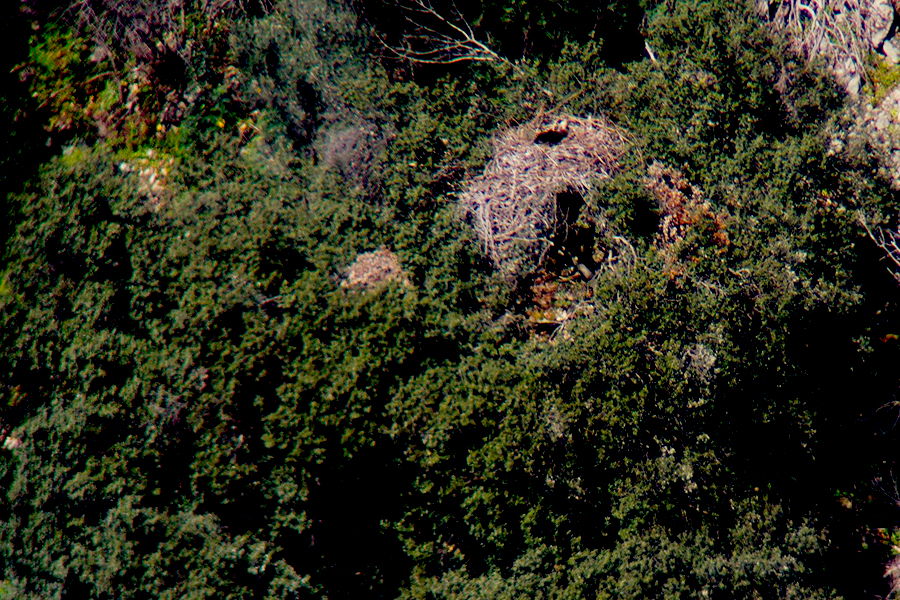In July 2018 Murtigão became the first-ever Cinereous Vulture nestling to be tagged in Portugal with a GPS transmitter, to help colleagues from Portugal’s Liga para a Protecção da Natureza (LPN) track his movements. Since then he has been moving locally, and closely followed by staff from the LPN and VCF on a daily basis, but Murtigão was also photographed at the end of November by a camera set up at a supplementary feeding site at Herdade da Contenda.
Following Murtigão
The Cinereous Vulture had been tagged in the nest located at the same Herdade da Contenda when it was 90 days old, with a GPS transmitter provided by the VCF with funding from the MAVA Foundation. Murtigão was one of two Cinereous Vultures that successfully fledged in 2018 from the eight breeding pairs in the area. The colony in Contenda is one of the three now existing in Portugal, following a recent recolonisation from the growing Spanish colonies nearby. Since he fledged the nest in the summer he has been crisscrossing the border area between Spain and Portugal.

But it wasn’t until now that the team have captured him photographically. At the end of November Murtigão was photographed visiting a supplementary feeding station managed by LPN in the Herdade da Contenda, the area of his fledging.
You can follow Murtigão’s movements by visiting our online maps created using the GPS data from his transmitter.
Cinereous Vultures in Portugal

Cinereous Vultures became extinct as breeding species in Portugal in the 1970s, mostly due to the use of poisoned carcasses targeting unwanted predators. An increasing population in Spain saw the species first return to breed in central Portugal (Tejo Internacional) in 2010 (where now there is a small colony of about 10 pairs), and then in north-eastern Portugal (one single pair). Then in 2015 they also started breeding in southern Portugal at there is a population of around eight breeding pairs, in Herdade da Contenda, a large estate owned and managed by the Moura Municipality. In total there are around 25 breeding pairs in Portugal.



